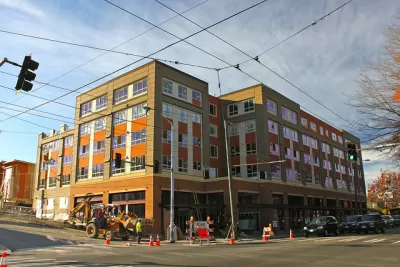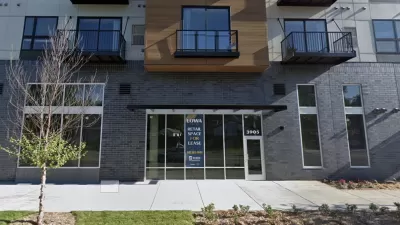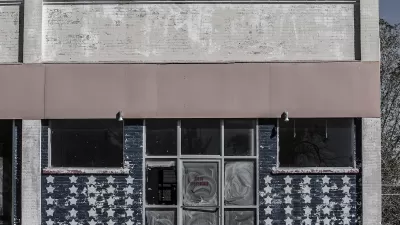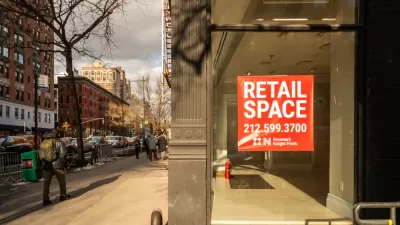Mixed-use developments still often operate better in theory than in reality.

Rachel Quednau writes on the subject of empty ground-floor retail spaces in the wave of mixed-use development that is being added at a increasingly rapid pace in communities around the country.
As cities and towns have rewritten zoning codes and plans to allow for mixed-use development, some "lovely" new developments have remade areas previously lacking in streetlife, according to Quednau. "But here’s the more common picture: a cookie-cutter five story apartment building over a vacant commercial space."
Given the popularity of the mixed-use building type, and the obvious appeal of a state-of-the-art facility to new business onwners, why aren't these ground-floor retails spaces filled with willing tenants? That's the question Quednau explores, finding a number of answers:
- "A problem of scale" – New commercial spaces are both two large and too expensive for mom and pop stores. Many developers are designing with chains in mind, in fact.
- Big banks, which finance mixed-use development projects, aren't exactly leading urbanists.
According to Quednau, there's also reasons for optimism, as more developers are "finding creative ways to return to the traditional way of building, which happened at a smaller, more incremental scale."
FULL STORY: WHAT’S UP WITH ALL THOSE EMPTY COMMERCIAL STOREFRONTS IN NEW MIXED-USE DEVELOPMENTS?

Planetizen Federal Action Tracker
A weekly monitor of how Trump’s orders and actions are impacting planners and planning in America.

Map: Where Senate Republicans Want to Sell Your Public Lands
For public land advocates, the Senate Republicans’ proposal to sell millions of acres of public land in the West is “the biggest fight of their careers.”

Restaurant Patios Were a Pandemic Win — Why Were They so Hard to Keep?
Social distancing requirements and changes in travel patterns prompted cities to pilot new uses for street and sidewalk space. Then it got complicated.

Platform Pilsner: Vancouver Transit Agency Releases... a Beer?
TransLink will receive a portion of every sale of the four-pack.

Toronto Weighs Cheaper Transit, Parking Hikes for Major Events
Special event rates would take effect during large festivals, sports games and concerts to ‘discourage driving, manage congestion and free up space for transit.”

Berlin to Consider Car-Free Zone Larger Than Manhattan
The area bound by the 22-mile Ringbahn would still allow 12 uses of a private automobile per year per person, and several other exemptions.
Urban Design for Planners 1: Software Tools
This six-course series explores essential urban design concepts using open source software and equips planners with the tools they need to participate fully in the urban design process.
Planning for Universal Design
Learn the tools for implementing Universal Design in planning regulations.
Heyer Gruel & Associates PA
JM Goldson LLC
Custer County Colorado
City of Camden Redevelopment Agency
City of Astoria
Transportation Research & Education Center (TREC) at Portland State University
Camden Redevelopment Agency
City of Claremont
Municipality of Princeton (NJ)





























